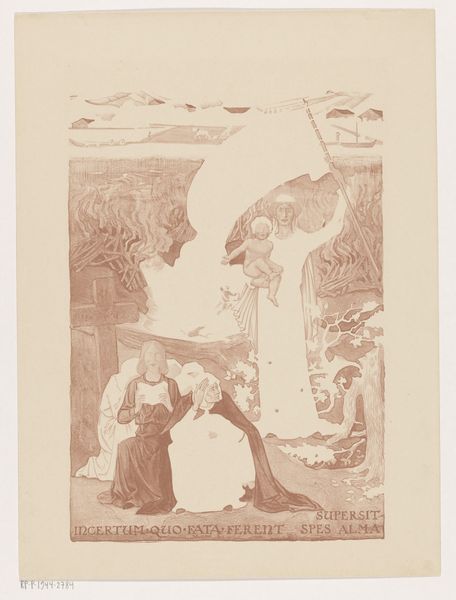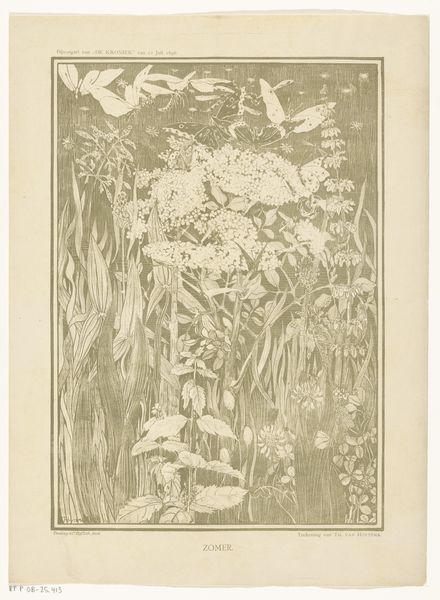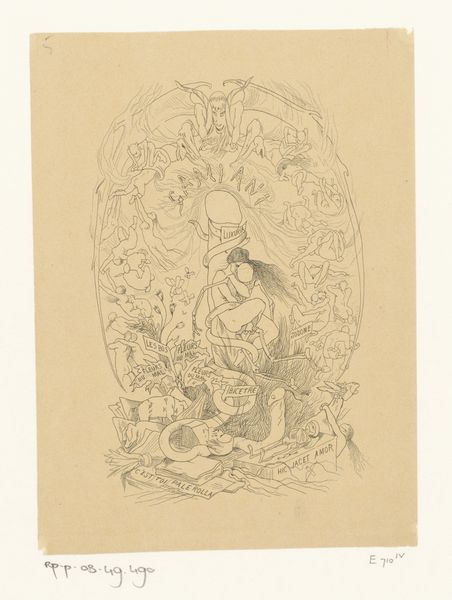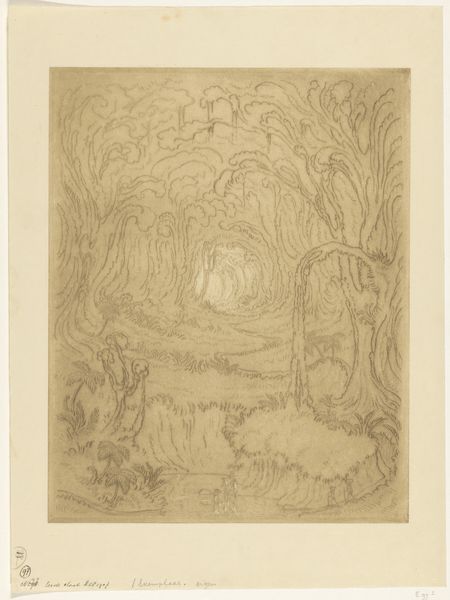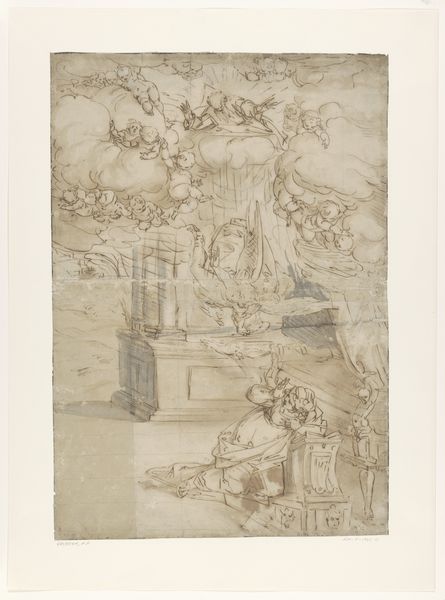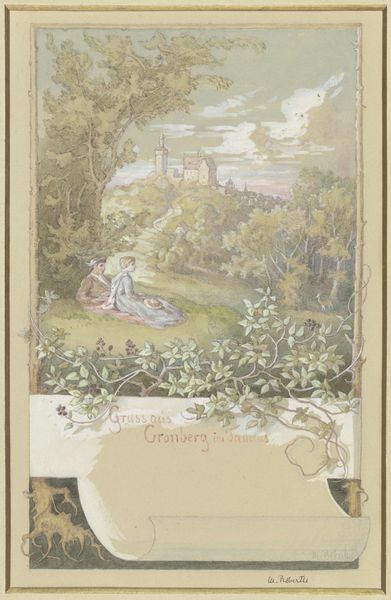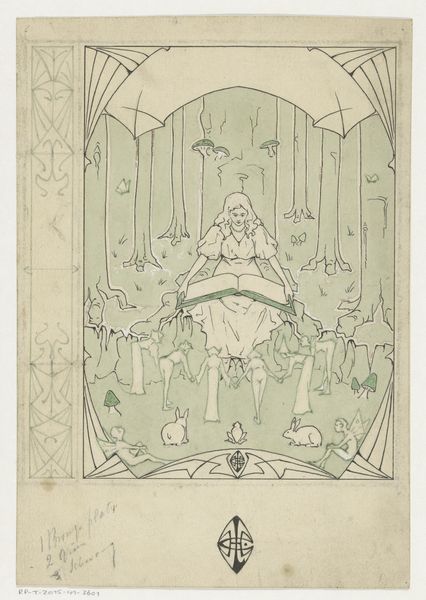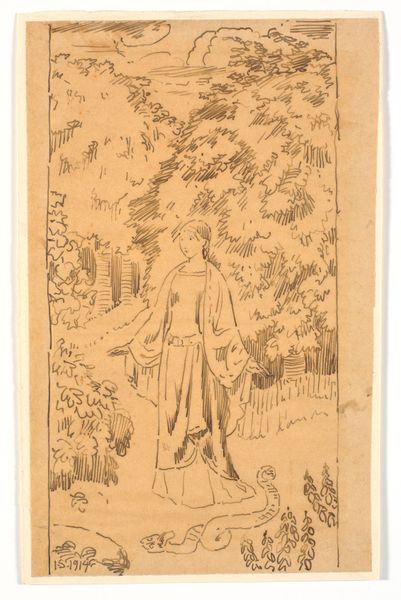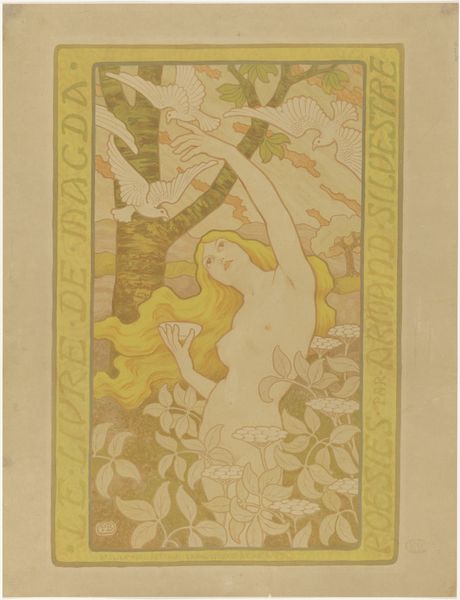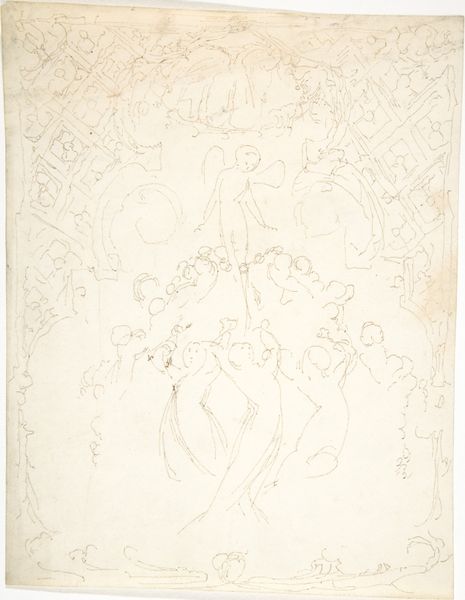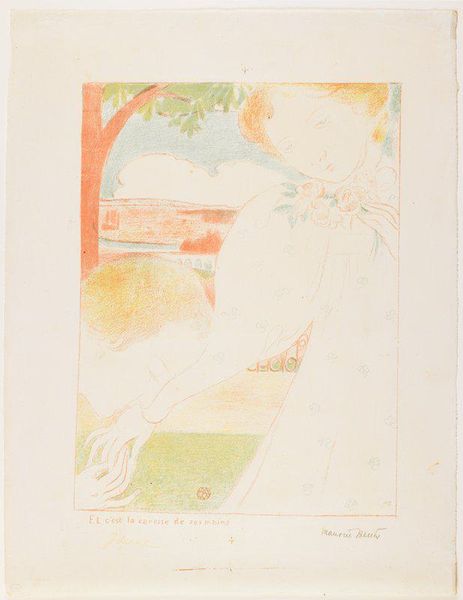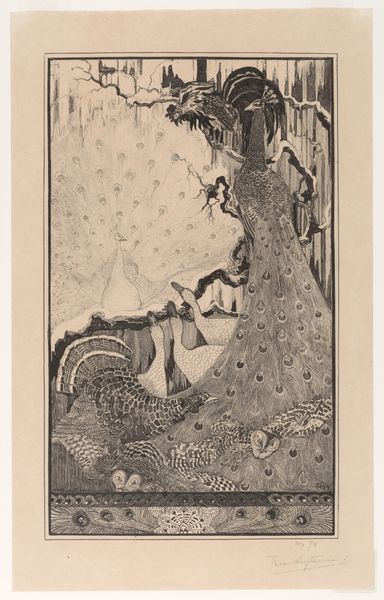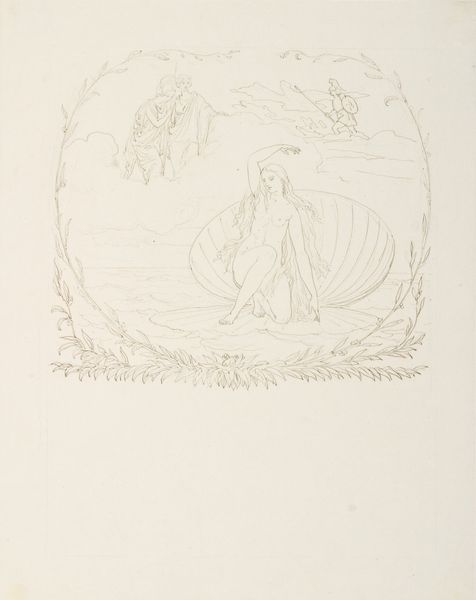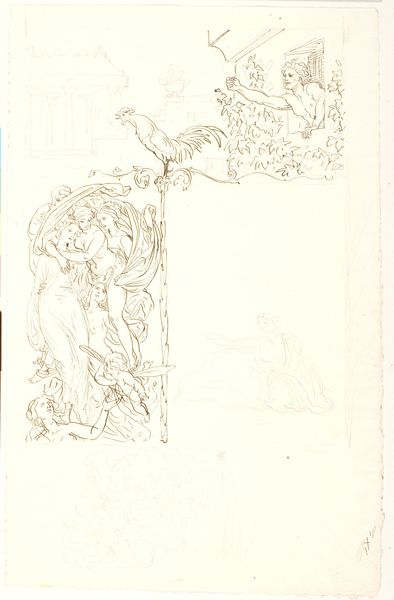
print, etching
#
allegory
# print
#
etching
#
war
#
landscape
#
etching
#
linocut print
#
symbolism
#
watercolour illustration
Dimensions: height 432 mm, width 323 mm
Copyright: Rijks Museum: Open Domain
Curator: Welcome. Before us hangs "Transvaalse prent," an etching created in 1902 by Antoon Derkinderen. The composition is predominantly a soft monochrome. Editor: It's striking how this print seems to exist in a space between dream and reality. The color palette, so muted and nearly tonal, creates a haunting sense of nostalgia. What draws your attention in terms of form? Curator: I'm intrigued by the spatial arrangement. There are layered planes from foreground to the distant ships, unified by a conceptual symbolism. Consider how Derkinderen orchestrates these spaces within the defined boundary, the edge creating formal containment and thematic intensity. Editor: Yes, but how was this achieved through his method? Understanding the labour of creating an etching gives such insight into the visual affect of this print. Note how the fine, precise lines of the etching serve to create these subtle gradations in tone. What stories of production can we uncover? The paper itself – its sourcing and quality – speaks to a wider context of the print's materiality, right? Curator: Indeed. His employment of symbolic imagery like the woman reading, the landscape, and the flag offer layers of meaning; the symbolic language operates within a formal structure. Observe how these motifs harmonize formally. It's more than just their immediate context but how these various forms correspond and respond. Editor: Yet, thinking about production deepens the impact. This piece was created in 1902. Can we assume its quick creation, serving as instant media, to communicate particular messages about a war? Here is the material process placed firmly within a political landscape, literally pressing ideological messaging onto the paper. Curator: A convincing reading. I admit the material and process here does amplify the symbolic message. Understanding the interaction enriches my appreciation for this piece and the social conditions to which Derkinderen responded. Editor: Likewise, reflecting on production helps understand the emotional weight this object might have carried, and its power as a means of circulating ideas and opinions during that period.
Comments
No comments
Be the first to comment and join the conversation on the ultimate creative platform.
